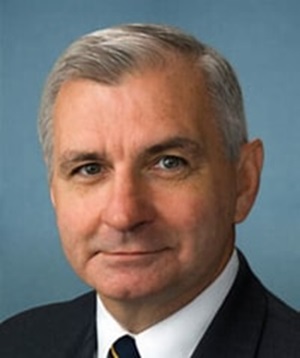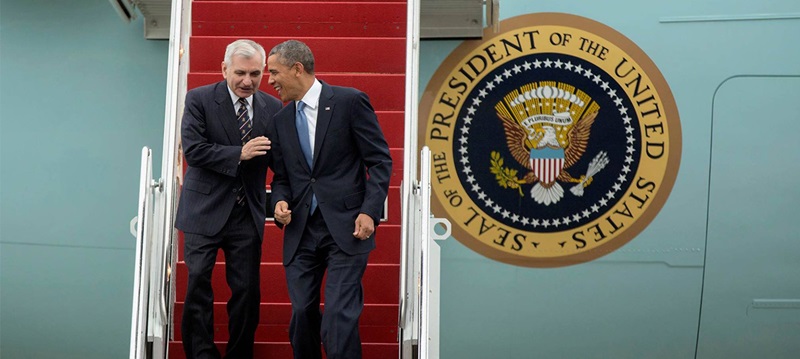Reed & Whitehouse Continue Years-Long Effort to Upgrade Mt. Hope Bridge

RI Senators have delivered $27 million to help prevent corroding of support cables
Portsmouth, RI – The picturesque Mount Hope Bridge between Bristol and Portsmouth will soon see major updates thanks to new federal funding.
In an effort to ensure the safety of the Mount Hope Bridge and save taxpayers money in repairs down the road, U.S. Senators Jack Reed and Sheldon Whitehouse today hailed a new $17 million Promoting Resilient Operations for Transformative, Efficient and Cost-Saving Transportation (PROTECT) grant for the Rhode Island Turnpike and Bridge Authority (RITBA) to make needed investments in the Mount Hope Bridge which, coupled with a $10 million federal earmark Reed and Whitehouse secured for the Mount Hope Bridge in the Fiscal Year 2023 Consolidated Appropriations law (P.L. 117-328), will help fund the installation of a dehumidification system on the steel wires, cables, and anchors of the Mount Hope Bridge.

JACK REED
Due to the age of the bridge and corrosion from the elements, the 700-ton cables that support the majority of Mount Hope Bridge’s weight have been weakened by cumulative corrosion and moisture.
Investing these federal funds in repairs to the historic suspension bridge and the protective dehumidification system will make the Mount Hope Bridge safer and could save taxpayers tenfold by preventing costlier damage in the future.

SHELDON WHITEHOUSE
Built in 1929, the Mount Hope Bridge — which is listed on the National Register of Historic Places — is one of only three connections from the mainland to Aquidneck Island, and the sole connection from the East Bay. The two-lane suspension bridge serves as a critical freight corridor connecting coastal Rhode Island to southeastern Massachusetts, Boston, and points north and west in the nation’s highway system. The Mount Hope Bridge carries an estimated 7 million motorists per year, according to RITBA, a quasi-state agency responsible for the operation and maintenance of Rhode Island’s four major bridges.
“Our bridges are lifelines that connect communities and we’ve got to keep them in good working order. Age, deterioration from the elements, and every day wear and tear can take a real toll on our bridges. This is a smart investment in keeping this 95-year old bridge in good working order, ensuring its safety and soundness for future generations, and putting people to work in good-paying jobs in the construction trades,” said Senator Reed. “I was pleased to work with Senator Whitehouse to earmark federal funds and help secure PROTECT grant funds for this project. Long before the westbound Washington Bridge went offline, Senator Whitehouse has been out in front on the need to invest in our bridges and do preventative maintenance, particularly on the Mount Hope Bridge. This federal funding will help harden our bridge infrastructure and make the Mount Hope Bridge more resilient to the impacts of climate change.”
“As the majestic Mount Hope Bridge nears its century mark, the Bridge is in urgent need of significant upgrades to protect the integrity of its cables from rising temperatures, moisture, and humidity caused by climate change. I’ve advocated extensively for this Mount Hope Bridge funding to prevent another massive disruption for Rhode Islanders, which would be triggered by further deterioration of the cables. Senator Reed has been an excellent partner on the Appropriations Committee as we have worked to prepare Rhode Island’s critical infrastructure for climate change and take preventive steps to keep the Mount Hope Bridge online,” said Whitehouse, who helped create the PROTECT Grant program as a senior member of the Senate Environment and Public Works Committee. “This investment follows the $82.5 million grant we secured to extend the life of the Pell Bridge, which was awarded from the INFRA Program I helped create.”
In 2021, RITBA issued a report on bridge inspections between 1960 and 2000 showing that 744 wires on the bridge had broken out of 2,450. While most of those were repaired over the years, the report highlighted that the entire bridge could be compromised if the cables were allowed to deteriorate without fixes. The $27 million in federal funding will help keep the bridge cables in a state of good repair and significantly improve the resilience of this key connection. RITBA officials have previously estimated that replacing the cables would cost over $500 million.

“We are so grateful to Senator Reed and Senator Whitehouse for their relentless advocacy and support of Rhode Island’s bridges,” said Lori Caron Silveira, Executive Director of the Rhode Island Turnpike and Bridge Authority. “Maintaining these bridges is critical for the communities that rely on them, and we appreciate that Senator Reed and Senator Whitehouse understand the unique needs of our infrastructure.”

RITBA began doing cable air flow testing earlier this year as part of the Mount Hope Dehumidification Project, which is part of a multi-year project to upgrade the bridge. The cable dehumidification technology that RITBA is using has been successfully employed in other major bridges in the U.S., including the Delaware Memorial Bridge and the South Tenth Street Bridge in Pittsburgh, Pennsylvania.
According to Structure magazine: “Main cable dehumidification involves injecting dried-air into the cable microenvironment and allowing the air to permeate into the interstitial spaces (voids) between the individual cable-wires. The dried-air collects the trapped water before releasing the moisture-laden air through exhaust ports (Figure 1). Cable dehumidification addresses the root cause of corrosion by removing one of the two necessary components of the corrosion process – water – which is far easier than removing the other component – oxygen.

“The premise of cable dehumidification is to protect the individual cable wires through the control of humidity within the cable. This is a long-proven technique dating back to the first half of the twentieth century, where work was carried out by W.H.J. Vernon and later by H.H. Uhlig of the MIT Corrosion Laboratory. The results of corrosion studies indicate that if the relative humidity (RH) is kept below 60%, the corrosion rate dramatically decreases, and below 40%, corrosion practically ceases.
